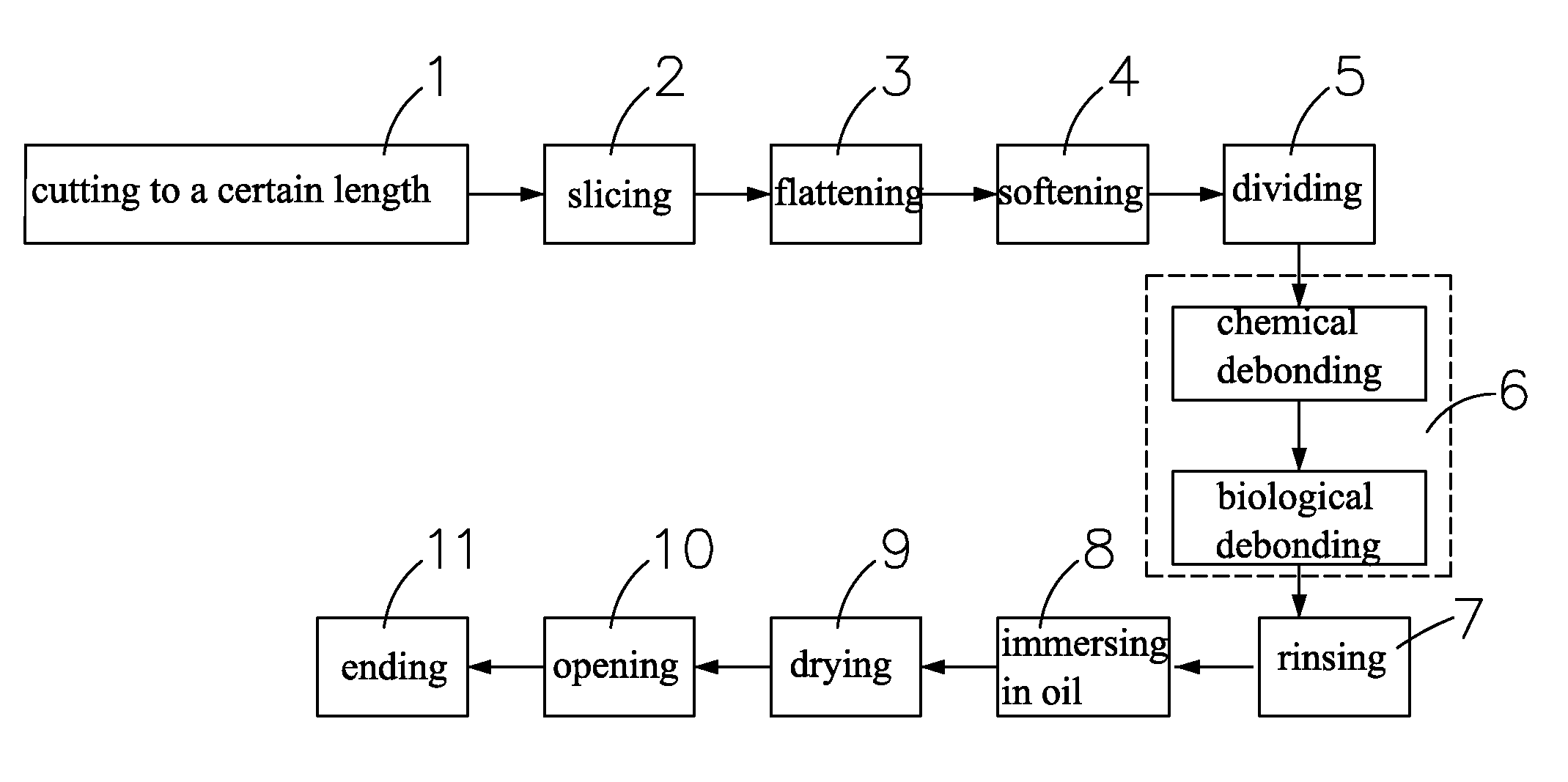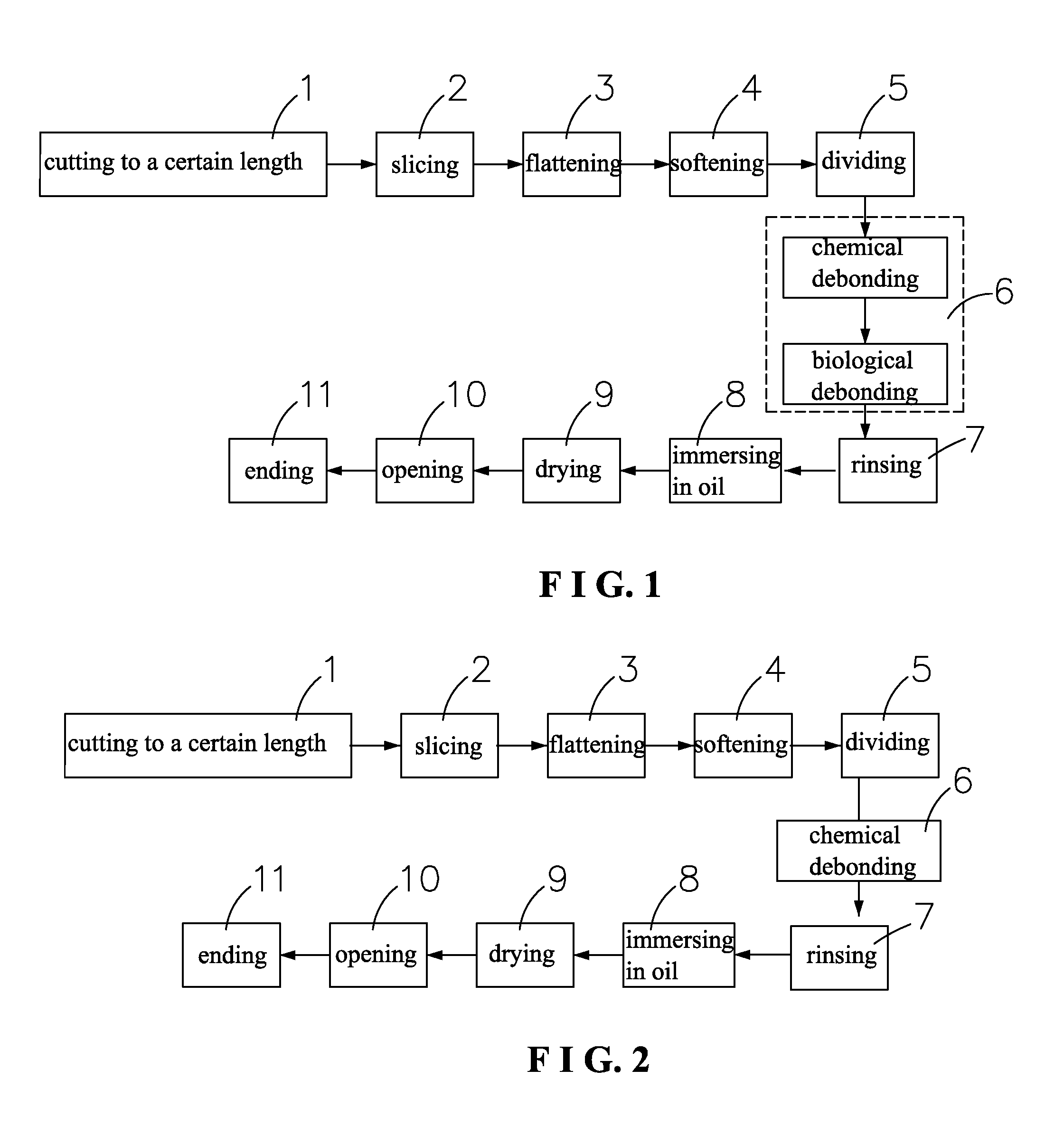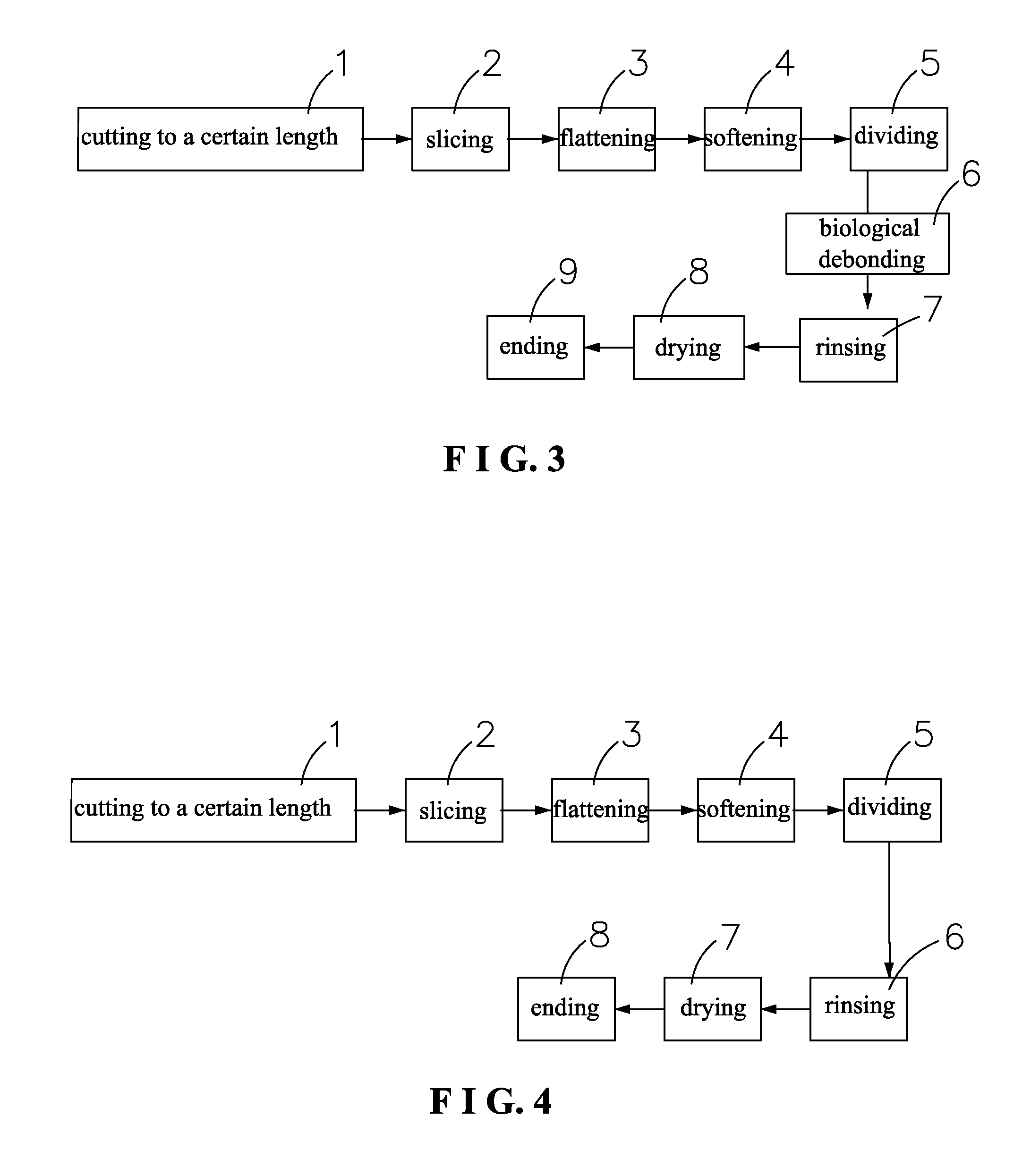Production technology for natural bamboo fibers
a production technology and natural bamboo fiber technology, applied in the field of natural bamboo fiber production technology, can solve the problems of high processing cost, low production efficiency, and high difficulty in production of natural bamboo fibers used in woven and non-woven fields, and achieve high resource utilization rate, simple production procedure, and high efficiency.
- Summary
- Abstract
- Description
- Claims
- Application Information
AI Technical Summary
Benefits of technology
Problems solved by technology
Method used
Image
Examples
Embodiment Construction
[0030]Before describing in detail, it should note that the like elements are denoted by the similar reference numerals throughout disclosure.
[0031]Referring to FIG. 1, a first preferred embodiment of the present invention is shown. A production technology for woven bamboo fibers comprises the steps of:
[0032]Step 1 for cutting to a certain length: An entire bamboo is cut into a bamboo tube adapted to a length of a softening hanging railing. A cut trunk of the bamboo tube and the tip of the bamboo are respectively stored. The tip of the bamboo is arranged as an off-cut, and the trunk of the bamboo tube is applied.
[0033]Step 2 for slicing: A hitting slicer is adopted to cut the trunk of the bamboo tube into a plurality of arc laminations which include an arc cross-section with an angle of 30-70°. The hit arc laminations with identical length are collected and transported to a next step.
[0034]Step 3 for flattening: A roll flattening machine is adopted to flatten the arc laminations into...
PUM
| Property | Measurement | Unit |
|---|---|---|
| angle | aaaaa | aaaaa |
| temperature | aaaaa | aaaaa |
| temperature | aaaaa | aaaaa |
Abstract
Description
Claims
Application Information
 Login to View More
Login to View More - R&D
- Intellectual Property
- Life Sciences
- Materials
- Tech Scout
- Unparalleled Data Quality
- Higher Quality Content
- 60% Fewer Hallucinations
Browse by: Latest US Patents, China's latest patents, Technical Efficacy Thesaurus, Application Domain, Technology Topic, Popular Technical Reports.
© 2025 PatSnap. All rights reserved.Legal|Privacy policy|Modern Slavery Act Transparency Statement|Sitemap|About US| Contact US: help@patsnap.com



